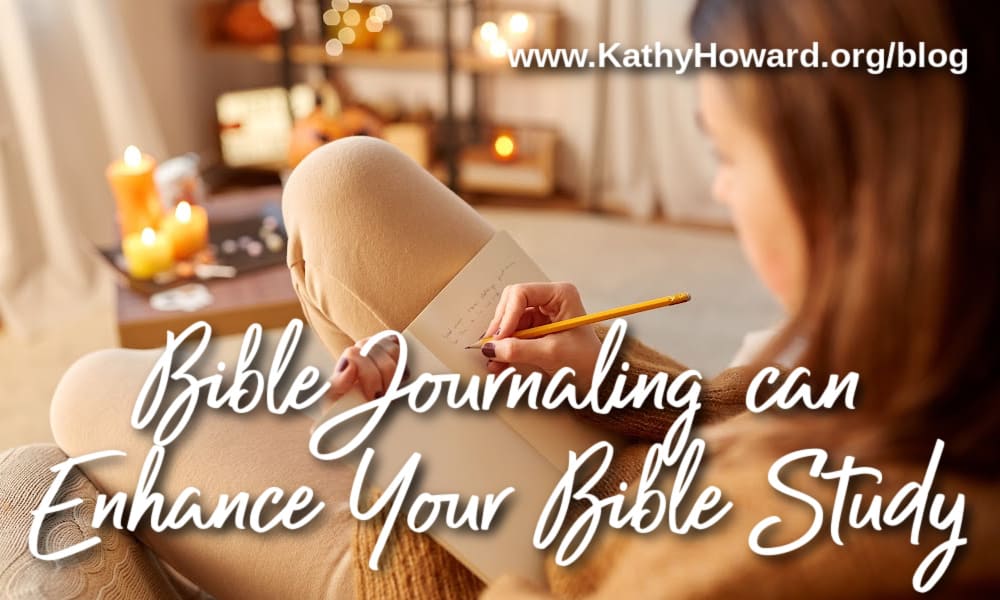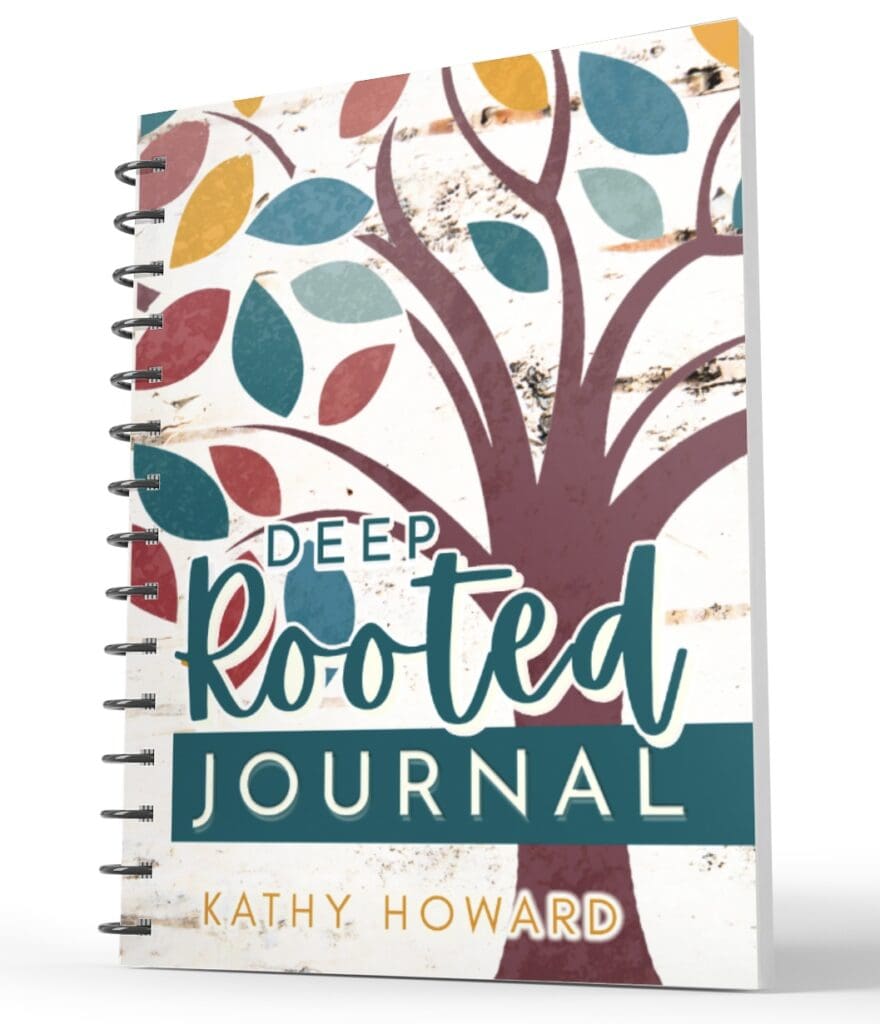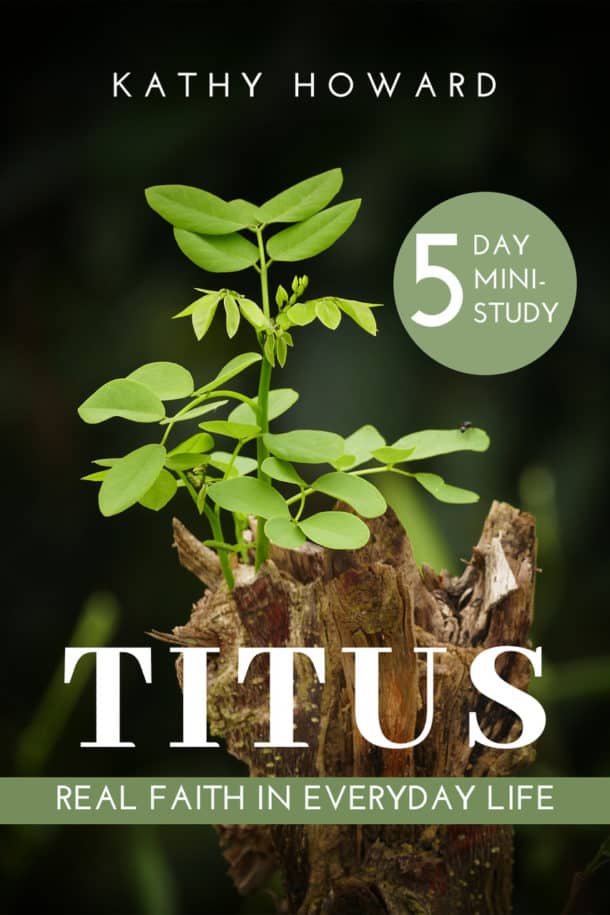
About ten years ago I was speaking at a women’s conference and attended a breakout a woman led on creative Bible journaling. This “journaling” was really beautiful art. She showed us how to visibly and creatively express the truths found in a passage in the margin or even across the whole page.
I gave it try but didn’t stick with it. While many women find this type of journaling helps them understand and own the biblical truth, I needed something different. I longed for a method that would help me dig deep into the passage, understand God’s meaning, and apply His truths.
After doing some investigating into different styles and studying some various Bible study methods, I landed on something that works really well for me. And from the feedback I’ve gotten, it works well for many others as well.
A few Types of Bible Journaling
There is more than one type of journaling referred to as “Bible journaling.” Although the following is not an exhaustive list, it will give you a good place to start.
- Artistic – Many women find that drawing, stenciling, and coloring help them meditate on the deep truths of the Scripture. Some keep their artwork in the margins and others cover the whole page (without obscuring the text itself). If you are interested in adding a creative aspect to the way you engage with Scripture this post – “How to Start Bible Journaling” – is a good place to start. You may also be interested in the unique “Discovering the Bible Series.” This innovative Bible study series by a team of women combines in-depth Bible study (Jean E Jones) with motivating devotions (Pam Farrel) and creative coloring pages (Karla Dornacher).
- Reflective – This type of journaling can help us see our life and circumstances more clearly through the lens of God’s Word. As we reflect on His truths, we can pour out our hearts to God in writing. Can include prayers, praise, soul needs, and how we should apply the Scripture. Use the margin of your Bible or a separate journal.
- Bible study – This is the type of Bible journaling I do. As I read a Bible passage, I follow a simple inductive study method I call the 4R Bible study method. First, I READ the passage through. Then during a second reading, I move into the RECORD step. After highlighting specific things in the text like important facts, key words, and commands I write my specific observations in the extra-wide margin of my single-column journaling Bible. (See also “Bible Highlighting” and “10 Ways to Observe a Bible Passage.”) You can also use a separate journal, notebook, or the newly released “Deep Rooted Journal.”
Types of Bibles to Consider for Bible Journaling
- Interleaved Bible – This type of Bible provides lots of space for journaling and study notes. The biblical text is printed in two columns, but across from each page of text is a full blank page. To see check out this NKJV red letter interleaved edition.
- Single-column wide-margin – This is the type of Bible I use. Each page includes just one column of biblical text, leaving an extra-wide, lightly lined margin for writing. The paper is heavier to minimize bleed-thru of pens and highlighters. I use a large print version because my eyes are old, but that makes it even easier for underlining and highlighting. If you’re interested, this is the one I use.
- Spiral-bound Illustrating Bible – I love the look of this Bible. This type of Bible also has a single-column of text, wide margin, and heavier paper. But the spiral binding also allows it to lay flat. Great feature that I may have to try out one day! Take a look at this one in the CSB translation.
- Scripture Journal – This great resource combines a full, single Bible book with lined blank pages for writing and study notes. For an example, see this Romans volume of the ESV Scripture Journal. They even offer a “study edition” that includes helpful tools and teaching notes.
If you rather not write in your Bible or simply need more room than even a wide-margin or interleaved Bible provides, you can use an actual journal. This option is also helpful if you are reading/studying a passage you’ve read before and your Bible is already packed with notes.
Deep Rooted Journal
If you want to do Bible study journaling but would rather write in something other than your Bible, I have a suggestion! The Deep Rooted Journal was designed just for that! (See this video to get an up close introduction to the journal!)

This enhanced journal can be used with any book of the Bible, one of the Deep Rooted devotional books, or any other Bible reading plan. The basic daily structure shows you how to interact with and respond to Scripture.
This resource is jam-packed with practical tools for your Bible reading, study, and prayer time:
- 50 days of Journaling pages for your daily Bible reading
- Book Background worksheets
- Breakdown of the 4 R Bible Study Method (Inductive)
- Lots of Bible study helps
- Scripture memory tips
- Six Bible Reading Plans
- And more!
You can see inside the journal on Amazon now!
Do you journal? If so, I’d love to know the type and is you find it helpful.


I tried to order this journal, but Amazon.ca will not ship to my address in Canada. That is sad!
I have heard from several Canadians about the same thing. My publisher is working on getting that resolved!